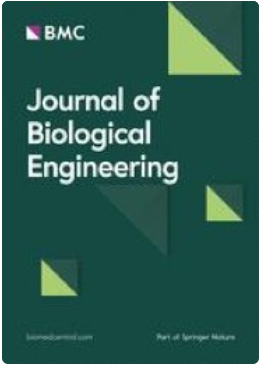Proteomic analysis of decellularized mice liver and kidney extracellular matrices
IF 5.7
3区 生物学
Q1 BIOCHEMICAL RESEARCH METHODS
引用次数: 0
Abstract
The extracellular matrix (ECM) is a three-dimensional network of proteins that encases and supports cells within a tissue and promotes physiological and pathological cellular differentiation and functionality. Understanding the complex composition of the ECM is essential to decrypt physiological processes as well as pathogenesis. In this context, the method of decellularization is a useful technique to eliminate cellular components from tissues while preserving the majority of the structural and functional integrity of the ECM. In this study, we employed a bottom-up proteomic approach to elucidate the intricate network of proteins in the decellularized extracellular matrices of murine liver and kidney tissues. This approach involved the use of a novel, perfusion-based decellularization protocol to generate acellular whole organ scaffolds. Proteomic analysis of decellularized mice liver and kidney ECM scaffolds revealed tissue-specific differences in matrisome composition, while we found a predominantly stable composition of the core matrisome, consisting of collagens, glycoproteins, and proteoglycans. Liver matrisome analysis revealed unique proteins such as collagen type VI alpha-6, fibrillin-2 or biglycan. In the kidney, specific ECM-regulators such as cathepsin z were detected. The identification of distinct proteomic signatures provides insights into how different matrisome compositions might influence the biological properties of distinct tissues. This experimental workflow will help to further elucidate the proteomic landscape of decellularized extracellular matrix scaffolds of mice in order to decipher complex cell–matrix interactions and their contribution to a tissue-specific microenvironment.脱细胞小鼠肝脏和肾脏细胞外基质的蛋白质组分析
细胞外基质(ECM)是由蛋白质组成的三维网络,它包裹并支持组织内的细胞,促进生理和病理细胞的分化和功能。了解 ECM 的复杂组成对于解密生理过程和发病机制至关重要。在这种情况下,脱细胞方法是一种有用的技术,它可以消除组织中的细胞成分,同时保留 ECM 的大部分结构和功能完整性。在本研究中,我们采用了一种自下而上的蛋白质组学方法,以阐明脱细胞小鼠肝脏和肾脏组织细胞外基质中错综复杂的蛋白质网络。这种方法采用了一种新颖的、基于灌流的脱细胞方案来生成无细胞的全器官支架。对脱细胞小鼠肝脏和肾脏 ECM 支架进行的蛋白质组分析表明,不同组织的基质组组成存在差异,而我们发现核心基质组的组成主要是稳定的,由胶原蛋白、糖蛋白和蛋白多糖组成。肝脏基质组分析发现了独特的蛋白质,如α-6型胶原蛋白、纤连蛋白-2或biglycan。在肾脏中,检测到了特定的 ECM 调节因子,如 cathepsin z。通过鉴定不同的蛋白质组特征,可以深入了解不同的基质组组成如何影响不同组织的生物特性。这一实验工作流程将有助于进一步阐明小鼠脱细胞细胞外基质支架的蛋白质组图谱,从而破解复杂的细胞-基质相互作用及其对组织特异性微环境的贡献。
本文章由计算机程序翻译,如有差异,请以英文原文为准。
求助全文
约1分钟内获得全文
求助全文
来源期刊

Journal of Biological Engineering
BIOCHEMICAL RESEARCH METHODS-BIOTECHNOLOGY & APPLIED MICROBIOLOGY
CiteScore
7.10
自引率
1.80%
发文量
32
审稿时长
17 weeks
期刊介绍:
Biological engineering is an emerging discipline that encompasses engineering theory and practice connected to and derived from the science of biology, just as mechanical engineering and electrical engineering are rooted in physics and chemical engineering in chemistry. Topical areas include, but are not limited to:
Synthetic biology and cellular design
Biomolecular, cellular and tissue engineering
Bioproduction and metabolic engineering
Biosensors
Ecological and environmental engineering
Biological engineering education and the biodesign process
As the official journal of the Institute of Biological Engineering, Journal of Biological Engineering provides a home for the continuum from biological information science, molecules and cells, product formation, wastes and remediation, and educational advances in curriculum content and pedagogy at the undergraduate and graduate-levels.
Manuscripts should explore commonalities with other fields of application by providing some discussion of the broader context of the work and how it connects to other areas within the field.
 求助内容:
求助内容: 应助结果提醒方式:
应助结果提醒方式:


